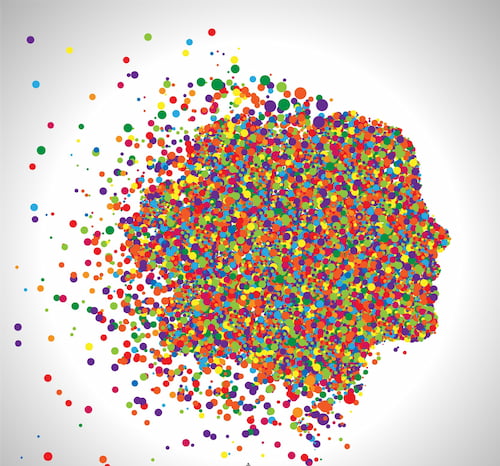Colors play a significant role in our daily lives, impacting our emotions, moods, and behaviors in various ways. From evoking feelings of warmth and passion to creating a sense of calm and tranquility, each color has its psychological effect on individuals. In this blog post, we will delve into the fascinating world of color psychology and explore the influence of different hues on our minds and emotions. We will uncover the impact of red, the influence of blue, the meaning of green, the psychological power of yellow, and the emotional response to black. Understanding how colors affect us can help us make informed decisions in our daily lives, from choosing the right outfit to creating a harmonious living space. Let's embark on this colorful journey together!Discover the psychological impact of colors: red excites, blue calms, green represents growth, yellow evokes positivity, black conveys sophist

Color psychology is the study of how colors can affect human behavior and emotions. Different colors have different meanings and can evoke various responses in individuals. Understanding the psychological effects of colors can be helpful in various aspects of life, from marketing to interior design.
According to research, red is often associated with passion, energy, and excitement. It can increase heart rate and create a sense of urgency. On the other hand, blue is known to be calming and soothing. It can promote feelings of trust and stability.
When it comes to green, it is often linked to nature, growth, and harmony. Green can create a sense of balance and promote relaxation. Yellow is associated with happiness, positivity, and energy. It can stimulate mental activity and enhance creativity. Meanwhile, black is often associated with mystery, elegance, and sophistication. It can create a sense of power and authority.
Red is a powerful and energetic color that has a significant impact on our emotions and behavior. It is often associated with passion, love, and intensity, but it can also evoke feelings of anger and aggression. In the field of color psychology, red is believed to increase heart rate and raise blood pressure, creating a sense of urgency and excitement.
When used in marketing and branding, red is often used to grab attention and create a sense of urgency. It is commonly seen in clearance sales and promotions to stimulate impulse buying. In nature, red is often associated with danger and warning signs, serving as a clear signal to proceed with caution.
When it comes to personal expression, wearing red can make a bold statement and attract attention. It is often seen as a confident and assertive color, making it a popular choice for politicians, athletes, and performers.
Blue is known to have a calming effect on the mind and body. It is often associated with feelings of tranquility and peace. People who are surrounded by blue often feel more relaxed and at ease. This color is believed to lower blood pressure and heart rate, making it an ideal choice for bedrooms and meditation spaces.
Psychologically, blue is linked to trust, loyalty, and stability. It is often used in corporate settings to convey professionalism and reliability. People are more likely to trust a business that uses blue in their branding or decor. When wearing blue clothing, individuals may appear more trustworthy and approachable.
According to color psychology, blue can also promote productivity and creativity. It stimulates the mind and encourages clear thinking. Many creative professionals choose blue as their preferred color to increase focus and inspiration. In certain contexts, blue can be seen as a symbol of intelligence and wisdom.
Green is a color that is often associated with nature, growth, and harmony. It is known to have a calming effect on individuals, promoting feelings of balance and stability. The color green is also believed to represent renewal and rejuvenation, as it is the color of plants and trees that come back to life after winter.
According to color psychology, green is said to have a positive impact on one's mood and mental state. It is often used in interior design to create a sense of tranquility and relaxation. In marketing, green is often used to promote eco-friendly products and services, as it is closely linked to sustainability and environmental awareness.
| Psychological Effects of Green: |
|---|
|
Yellow is a color that is often associated with positivity, happiness, and energy. It is a vibrant and eye-catching color that can instantly lift the mood of those who see it. In terms of color psychology, yellow is believed to stimulate mental activity, increase awareness, and enhance creativity. It is also associated with optimism, enthusiasm, and spontaneity.
When used in decor, yellow can create a sense of warmth and coziness in a space. It is often used in kitchens and dining rooms to stimulate appetite and encourage social interaction. In branding and marketing, yellow is used to grab attention and convey a sense of fun and friendliness. It is also commonly used in warning signs and caution labels to attract attention and convey a sense of urgency.
Overall, the psychological power of yellow lies in its ability to evoke feelings of positivity, energy, and warmth. Whether used in design, branding, or decor, yellow has a strong impact on our emotions and can influence our mood and behavior in powerful ways.
Black is often associated with mystery, power, and sophistication. In terms of color psychology, black can evoke a range of emotional responses from individuals. Some may find black to be intimidating or threatening, while others may view it as elegant and timeless.
When considering the psychological effect of black, it is important to recognize that this color can symbolize both authority and mourning. In certain contexts, black may represent power and authority, while in other situations, it may signify grief and sadness.
Black is often used in
| Positive Associations | Negative Associations |
|---|---|
|
|
clothing and interior design to create a sense of drama and elegance, but it can also be overpowering if used in excess.